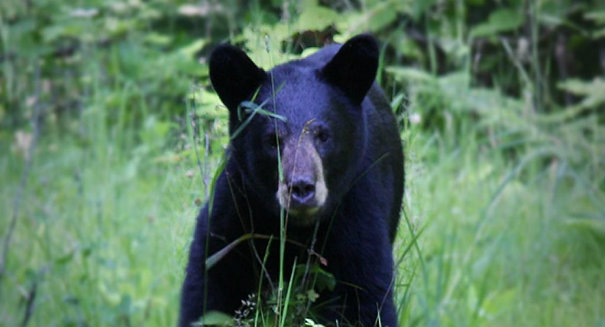
Grizzly bear
A North Texas man was viciously mauled by a brown bear that had a group of cubs while he was hunting for moose in Alaska. According to a report from
Dallas Morning News, the man is in critical condition after the attack.
47-year-old Gregory Joseph Matthews of Plano, TX suffered life-threatening injuries on Tuesday as his brother watched on in horror while the two were out hunting in the Kenai National Wildlife Refuge. The man is expected to survive.
The refuge manager, Andy Loranger, reported that fishermen in the area notified authorities of the attack, and Matthews was airlifted out of the park and to a nearby hospital. On Wednesday, Matthews was reportedly in good condition but refused requests for an interview following the attack.
Loranger says that the salmon are making their annual pass through the Alaskan rivers, and this has attracted the attention of a number of large predators. Wildlife officials are currently searching for the bear that attacked Matthews in the area surrounding Doroshin Bay, as well as the upper shores of Skilak Lake, but they still have found no evidence of the culprit.
Residents in a neighborhood near Corinth reported a black bear cub in the area earlier this June, worried that the mother might become aggressive as she searched for her young. The cub was captured and transferred to the International Exotic Animal Sanctuary in Boyd.
Bears typically attack humans or domestic pets when they feel threatened in their own habitat. They often come across hikers, fishermen, and hunters, and although they are rare, they are usually fatal.
Between 1900 and 1985, there were roughly 160 bear attacks in the United States, according to Taylor Y. Cardal and Peter Rosen, the authors of the famous article "Grizzly Bear Attack," which was published in the
Journal of Emergency Medicine.
Black bear
The black bear, pictured above, is rarely considered dangerous but have shown limited aggressiveness to people that encroach on their territory in a threatening manner. They typically charge, make noises, and swat at the ground with their paws to intimidate potential threats. Black bears have attacked more humans than brown bears, but this is largely due to the fact that the species has a much wider range.
Brown bears, like the one that attacked Matthews, are unpredictable and are likely to attack when they feel threatened or surprised. Mothers with cubs, like the one in the recent attack, are largely responsible for the attacks on record, and small parties are more likely to be attacked than large groups. They attack humans by rising up on their rear legs, and attempt to lock down their victim's lower jaw to avoid being bitten. While humans are not likely to inflict a deadly bite wound on a bear much larger than they are, this is typically the way bears fight against each other in the wild.
Grizzly bears are the most fearsome, however. Grizzlies can tower 7 feet in the air and are notorious for attacking humans in the western reaches of North America.


Reader Comments
to our Newsletter